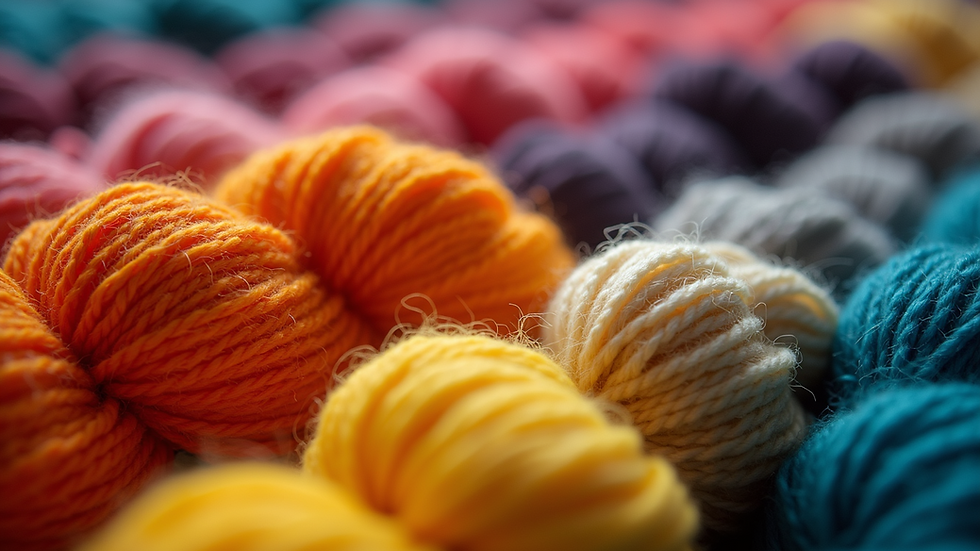Discover Unique Handmade Paints for Creative Projects
- ALEXIS DAVID CORTES AVILA
- Sep 1
- 4 min read
In a world filled with mass-produced art supplies, there is something truly special about handmade paints. These unique creations not only offer vibrant colors but also tell a story. Each batch is crafted with care, often using natural ingredients that can transform your creative projects. Whether you are a seasoned artist or a hobbyist, exploring handmade paints can open up a new realm of possibilities.
Handmade paints come in various forms, from watercolors to acrylics, and even oil paints. They can be made from natural pigments, plant extracts, and other organic materials. This blog post will guide you through the fascinating world of handmade paints, their benefits, and how to incorporate them into your creative projects.
The Allure of Handmade Paints
Handmade paints have a charm that commercial paints often lack. Here are a few reasons why they stand out:
Unique Colors: Each handmade paint can have a distinct hue. The use of natural pigments means that colors can vary from batch to batch, giving your artwork a one-of-a-kind feel.
Eco-Friendly: Many handmade paints are made from sustainable materials. This is a great option for environmentally conscious artists.
Rich Textures: Handmade paints often have a different consistency compared to their commercial counterparts. This can add depth and character to your artwork.
Cultural Significance: Some handmade paints are rooted in tradition, using techniques passed down through generations. This adds a layer of history to your creative projects.
Types of Handmade Paints
When it comes to handmade paints, there are several types to explore. Here are some popular options:
Watercolors
Handmade watercolors are often made from natural pigments mixed with a binder. They can produce stunning washes and delicate details.
Example: A watercolor set made from crushed minerals can create vibrant landscapes.
Acrylics
Acrylic paints can also be handmade, using natural resins and pigments. They dry quickly and are versatile for various surfaces.
Example: A handmade acrylic paint made from plant-based materials can provide a smooth finish.
Oil Paints
Handmade oil paints are crafted using natural oils and pigments. They take longer to dry, allowing for blending and layering techniques.
Example: A set of oil paints made from organic linseed oil can enhance the richness of your artwork.
How to Use Handmade Paints in Your Projects
Incorporating handmade paints into your creative projects can be a rewarding experience. Here are some tips to get started:
Experiment with Techniques
Try different painting techniques to see how handmade paints behave. For instance, use wet-on-wet techniques with watercolors or layering with acrylics.
Mix and Match
Don’t hesitate to mix different types of handmade paints. Combining watercolors with acrylics can create interesting effects.
Create Your Own
If you are feeling adventurous, consider making your own handmade paints. There are many tutorials available online that guide you through the process.
Use Natural Surfaces
Handmade paints often work well on natural surfaces. Try painting on wood, canvas, or even handmade paper for a unique touch.
Where to Find Handmade Paints
Finding quality handmade paints can be an adventure in itself. Here are some places to look:
Local Artisans
Visit local art fairs or craft markets. Many artisans sell their handmade paints directly to customers. This is a great way to support local artists.
Online Marketplaces
Websites like Etsy offer a wide range of handmade paints from various sellers. You can find unique colors and styles that may not be available in stores.
Specialty Art Stores
Some art supply stores focus on handmade or eco-friendly products. Check your local listings to find stores that carry these items.
The Benefits of Using Handmade Paints
Using handmade paints can enhance your artistic journey. Here are some benefits to consider:
Personal Connection: Knowing that your paints are made by hand can create a deeper connection to your artwork.
Quality Control: Many handmade paints are made in small batches, ensuring quality and attention to detail.
Inspiration: The unique colors and textures of handmade paints can inspire new ideas and techniques in your work.
Tips for Storing Handmade Paints
Proper storage is essential to maintain the quality of your handmade paints. Here are some tips:
Keep Them Sealed: Always store paints in airtight containers to prevent them from drying out.
Cool, Dark Place: Store your paints in a cool, dark place to protect them from light and heat.
Label Your Containers: If you have multiple colors, label your containers to easily identify them.
Inspiring Projects with Handmade Paints
Here are a few project ideas to get your creative juices flowing:
Nature-Inspired Artwork
Use handmade watercolors to create a series of nature-inspired paintings. Capture the beauty of flowers, landscapes, or wildlife.
Custom Home Decor
Create unique wall art using handmade acrylics. Experiment with different techniques to add texture and depth to your pieces.
Personalized Gifts
Handmade paints can be used to create personalized gifts. Consider painting a custom piece for a friend or family member.
Final Thoughts on Handmade Paints
Exploring the world of handmade paints can be a delightful journey. These unique creations offer endless possibilities for your creative projects. Whether you are painting a canvas, crafting a gift, or simply experimenting with colors, handmade paints can elevate your art.
As you embark on this colorful adventure, remember to enjoy the process. Each stroke of your brush is a chance to express yourself. So, gather your supplies, unleash your creativity, and let the beauty of handmade paints inspire you.






Comments